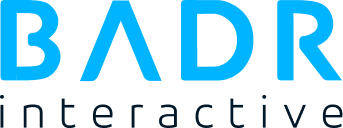Software Development Costs
Estimates Cost Driver, Projection and Saving Strategies.
Badr Interactive offers medium to large-scale development services from IDR 200 million to IDR 20 billion, with costs varying by feature complexity, architecture, development approach, and team expertise and location.
- Cost, Resources, and Timeline Correlation
Higher costs mean bigger teams, faster timelines, or complex features needing more resources and time.
- Integrated Service Package
Our development services are unified, with separate services available as added support to ensure all components meet overall project quality and performance standards.
You dream it.
We Build it!
Please answer a few questions about your software development requirements.
Key Cost Components
Software Development Projects
- Requirement and Planning Phase
- Design Phase
- Development Phase
- Quality Assurance Phase
- Deployment Phase
- Maintenance Phase
Requirement and Planning Phase
Costs: ~10% of the project cost
At Badr Interactive, we allocate about 10% of the project cost to requirements, UX design, and planning. This phase has a tremendous impact on the project’s success, aligning business needs with the final solution while reducing the risk of scope changes, miscommunication, and costly revisions later in development.
During this initial phase, the development team:
- Analyzes both immediate and long-term business needs, reviews current processes and existing software.
- Collects functional requirements to define software features and capabilities.
- Designs the user experience (UX) that dictates how users will interact with the system.
- Develops a detailed project roadmap, outlining deadlines, deliverables, and milestones.
- Establishes clear communication methods with relevant stakeholders.
- Identifies potential project constraints and risks early in the process.
To optimize and reduce project planning costs:
- Engage Expert Analysts for Requirements Elicitation
Accurate requirements are crucial for success. Experienced analysts ensure clear, actionable specifications, minimizing costly delays and redevelopment.
- Involve Key Stakeholders Early
Engaging stakeholders and end users from the start prevents misalignment and costly mid-development changes, protecting timelines and budgets.
- Create a Comprehensive Business Requirements Document (BRD)
- A well-structured BRD captures all essential requirements and project details, providing a clear reference point for stakeholders and reducing the risk of misunderstandings throughout development.
- You can download our BRD guideline here.
Architecture and UI Design
Costs: ~5-10% of the project cost
In the design phase, the team translates requirements into a structured framework that can be implemented with a specific technology stack. This phase is divided into two key areas:
- Technical Design (Software Architecture): This outlines the software layers, modules, their integrations, data structures, and necessary algorithms.
- UI Design: This focuses on what the end users will see and interact with.
To optimize architecture and UI design costs:
- Use Your Existing Software
Check if any parts of your current systems can be reused. This is often more cost-effective and less risky than building new components from scratch.
- Take a Modular Approach
If possible, break your software into smaller, manageable parts. This allows you to launch new features more quickly and with less disruption to your business.
- Consider Pre-Made UI Templates
Unless having a unique design is essential for your brand, using ready-made UI templates can save time and money while still providing a great user experience.
Development Phase
Cost :Back-end Development – approximately 40% of project costs, Front-end Development – approximately 25% of project costs.
In the development phase,back-end developers create server-side code and APIs, conducting unit tests, while front-end developers transform static UI mockups into interactive, fully functional user interfaces.
To Reduce Software Development Costs:
- Implement Development and Delivery Automation
Establish Continuous Integration/Continuous Deployment (CI/CD) to streamline development, allowing integration, testing, and deployment of new features within 2-3 hours.
- Consider Low-Code Development
Use low-code platforms (e.g., Microsoft Power Apps, OutSystems) to accelerate development, making it up to 4 times cheaper and 10 times faster through visual application-building tools.
- Leverage Hybrid Mobile Development
Adopt hybrid platforms (e.g., React Native, Flutter) for mobile development instead of building separate native applications in Kotlin for Android and Swift for iOS. This approach enables a single codebase for both platforms, significantly reducing development time and costs while maintaining near-native performance and user experience.
- Utilize Ready-to-Use Cloud Services
Use existing cloud services for storage, data management, and analytics to save time and resources, eliminating the need to build these components from scratch.
- Automated Testing
Invest in automated testing to ensure code quality and reduce the cost of manual testing.
Quality Assurance Phase
Costs: Approximately 15-20% of project costs.
In the Quality Assurance (QA) phase, the team evaluates whether the software meets specified functional and non-functional requirements and reports any defects found. While QA is often listed as a separate stage, it should run concurrently with development for maximum effectiveness, covering the entire Software Development Life Cycle (SDLC), from requirements gathering to software maintenance.
To optimize and reduce project planning costs:
- Implement Test Automation
Automate testing where possible to save time and reduce costs by up to 20%, leading to quicker feedback and broader test coverage.
- Use Continuous Testing
Integrate continuous testing within the CI/CD pipeline to regularly run tests throughout development, helping to identify defects in real-time and lowering the overall QA workload.
- Establish Clear Testing Criteria
Set clear testing criteria at the project’s start to avoid ambiguity and ensure the QA team knows exactly what to test, reducing unnecessary efforts.
Deployment Phase
Costs: Vary based on the services provided during this stage.
In the deployment phase, the team makes the software available for use. This includes tasks such as installation, customization, user acceptance testing (UAT), creating user guidelines, and providing user training.
To Reduce Quality Assurance Costs:
- Automate Deployment Processes
Utilize automation tools (e.g., Jenkins, Ansible) to streamline the deployment process. Automated deployments minimize manual errors, speed up the process, and reduce the time and costs associated with deployments.
- Standardize Deployment Procedures
Create standardized deployment protocols to ensure consistency and efficiency. By having a clear, repeatable process, you can reduce the time spent on each deployment and minimize the risk of errors.
- Leverage Cloud Services
Use cloud platforms to simplify deployment. Cloud services often provide built-in tools for scaling and managing applications, reducing the need for extensive manual intervention and cutting deployment costs.
- Conduct Thorough Training and Documentation
Invest in comprehensive training for users and provide clear documentation. Well-trained users are less likely to encounter issues post-deployment, reducing the need for costly support interventions.
- Implement User Acceptance Testing Early
Involve end users in UAT early in the deployment process to identify potential issues before the software goes live. Early feedback can prevent costly fixes after deployment.
Maintenance Phase
Costs: Free bug-fixing support for a defined period.
At Badr Interactive, we proudly offer complimentary bug-fixing support for the duration of your development contract. This commitment ensures that you receive ongoing assistance without incurring additional costs, allowing you to focus on leveraging your software’s capabilities while we handle maintenance efficiently.
To Reduce Maintenance Costs after free period:
- Optimize Resource Utilization
Continuously assess resource needs to identify and eliminate unused capacity. This proactive approach ensures that you’re only paying for what you truly need.
- Track Unused Services
Regularly review your cloud services and terminate those that are no longer necessary. This helps streamline costs and maximize efficiency.
- Leverage Cost-Effective Cloud Pricing
Explore your cloud provider’s pricing models. For example, utilizing Reserved Instances from Azure or AWS can significantly reduce cloud costs—by up to 72-75%—if your resource demand is stable over time.
Requirement and Planning Phase
Costs: ~10% of the project cost
At Badr Interactive, we allocate about 10% of the project cost to requirements, UX design, and planning. This phase has a tremendous impact on the project’s success, aligning business needs with the final solution while reducing the risk of scope changes, miscommunication, and costly revisions later in development.
During this initial phase, the development team:
- Analyzes both immediate and long-term business needs, reviews current processes and existing software.
- Collects functional requirements to define software features and capabilities.
- Designs the user experience (UX) that dictates how users will interact with the system.
- Develops a detailed project roadmap, outlining deadlines, deliverables, and milestones.
- Establishes clear communication methods with relevant stakeholders.
- Identifies potential project constraints and risks early in the process.
To optimize and reduce project planning costs:
- Engage Expert Analysts for Requirements Elicitation
Accurate requirements are crucial for success. Experienced analysts ensure clear, actionable specifications, minimizing costly delays and redevelopment.
- Involve Key Stakeholders Early
Engaging stakeholders and end users from the start prevents misalignment and costly mid-development changes, protecting timelines and budgets.
- Create a Comprehensive Business Requirements Document (BRD)
- A well-structured BRD captures all essential requirements and project details, providing a clear reference point for stakeholders and reducing the risk of misunderstandings throughout development.
- You can download our BRD guideline here.
Architecture and UI Design
Costs: ~5-10% of the project cost
In the design phase, the team translates requirements into a structured framework that can be implemented with a specific technology stack. This phase is divided into two key areas:
- Technical Design (Software Architecture): This outlines the software layers, modules, their integrations, data structures, and necessary algorithms.
- UI Design: This focuses on what the end users will see and interact with.
To optimize architecture and UI design costs:
- Use Your Existing Software
Check if any parts of your current systems can be reused. This is often more cost-effective and less risky than building new components from scratch.
- Take a Modular Approach
If possible, break your software into smaller, manageable parts. This allows you to launch new features more quickly and with less disruption to your business.
- Consider Pre-Made UI Templates
Unless having a unique design is essential for your brand, using ready-made UI templates can save time and money while still providing a great user experience.
Development Phase
Cost :Back-end Development – approximately 40% of project costs, Front-end Development – approximately 25% of project costs.
In the development phase,back-end developers create server-side code and APIs, conducting unit tests, while front-end developers transform static UI mockups into interactive, fully functional user interfaces.
To Reduce Software Development Costs:
- Implement Development and Delivery Automation
Establish Continuous Integration/Continuous Deployment (CI/CD) to streamline development, allowing integration, testing, and deployment of new features within 2-3 hours.
- Consider Low-Code Development
Use low-code platforms (e.g., Microsoft Power Apps, OutSystems) to accelerate development, making it up to 4 times cheaper and 10 times faster through visual application-building tools.
- Leverage Hybrid Mobile Development
Adopt hybrid platforms (e.g., React Native, Flutter) for mobile development instead of building separate native applications in Kotlin for Android and Swift for iOS. This approach enables a single codebase for both platforms, significantly reducing development time and costs while maintaining near-native performance and user experience.
- Utilize Ready-to-Use Cloud Services
Use existing cloud services for storage, data management, and analytics to save time and resources, eliminating the need to build these components from scratch.
- Automated Testing
Invest in automated testing to ensure code quality and reduce the cost of manual testing.
Quality Assurance Phase
Costs: Approximately 15-20% of project costs.
In the Quality Assurance (QA) phase, the team evaluates whether the software meets specified functional and non-functional requirements and reports any defects found. While QA is often listed as a separate stage, it should run concurrently with development for maximum effectiveness, covering the entire Software Development Life Cycle (SDLC), from requirements gathering to software maintenance.
To optimize and reduce project planning costs:
- Implement Test Automation
Automate testing where possible to save time and reduce costs by up to 20%, leading to quicker feedback and broader test coverage.
- Use Continuous Testing
Integrate continuous testing within the CI/CD pipeline to regularly run tests throughout development, helping to identify defects in real-time and lowering the overall QA workload.
- Establish Clear Testing Criteria
Set clear testing criteria at the project’s start to avoid ambiguity and ensure the QA team knows exactly what to test, reducing unnecessary efforts.
Deployment Phase
Costs: Vary based on the services provided during this stage.
In the deployment phase, the team makes the software available for use. This includes tasks such as installation, customization, user acceptance testing (UAT), creating user guidelines, and providing user training.
To Reduce Quality Assurance Costs:
- Automate Deployment Processes
Utilize automation tools (e.g., Jenkins, Ansible) to streamline the deployment process. Automated deployments minimize manual errors, speed up the process, and reduce the time and costs associated with deployments.
- Standardize Deployment Procedures
Create standardized deployment protocols to ensure consistency and efficiency. By having a clear, repeatable process, you can reduce the time spent on each deployment and minimize the risk of errors.
- Leverage Cloud Services
Use cloud platforms to simplify deployment. Cloud services often provide built-in tools for scaling and managing applications, reducing the need for extensive manual intervention and cutting deployment costs.
- Conduct Thorough Training and Documentation
Invest in comprehensive training for users and provide clear documentation. Well-trained users are less likely to encounter issues post-deployment, reducing the need for costly support interventions.
- Implement User Acceptance Testing Early
Involve end users in UAT early in the deployment process to identify potential issues before the software goes live. Early feedback can prevent costly fixes after deployment.
Maintenance Phase
Costs: Free bug-fixing support for a defined period.
At Badr Interactive, we proudly offer complimentary bug-fixing support for the duration of your development contract. This commitment ensures that you receive ongoing assistance without incurring additional costs, allowing you to focus on leveraging your software’s capabilities while we handle maintenance efficiently.
To Reduce Maintenance Costs after free period:
- Optimize Resource Utilization
Continuously assess resource needs to identify and eliminate unused capacity. This proactive approach ensures that you’re only paying for what you truly need.
- Track Unused Services
Regularly review your cloud services and terminate those that are no longer necessary. This helps streamline costs and maximize efficiency.
- Leverage Cost-Effective Cloud Pricing
Explore your cloud provider’s pricing models. For example, utilizing Reserved Instances from Azure or AWS can significantly reduce cloud costs—by up to 72-75%—if your resource demand is stable over time.
Major Cost Determinants
Based on our extensive experience in software development, Badr Interactive has identified several key factors that may affect the overall cost of your project:
Software - Related Factors
Supported Platforms
The number of platforms and operating system versions that the application will support, especially for mobile apps.
Business Functions
The range of business functions covered, such as finance, supply chain management (SCM), production, human resources (HR), and customer relationship management (CRM).
Business Processes
The extent of business processes integrated, for instance, sales and marketing functions like email marketing, lead nurturing, and ad campaign management.
Performance Requirements
Considerations for software performance, availability, security, latency, and scalability.
User Capacity
The expected number of users and the different roles they will have within the application.
Architecture Complexity
The intricacy of application logic and architecture, including the number of tiers, modules, and whether it will be on-premises, hybrid, or cloud-native.
Integration Needs
Integration Needs: The number and complexity of integrations with other software systems, including one-way or two-way integrations and whether custom solutions or ready-built enterprise service buses (ESBs) will be used.
Advanced Technologies
Advanced Technologies: The inclusion of advanced technologies, such as machine learning, augmented reality (AR), or virtual reality (VR).
Development - Related Factors
Development Approach
The chosen methodology, such as writing custom code from scratch, utilizing low-code development platforms, or integrating ready-built solutions to fulfill specific functionalities.
Vendor Location
If the client is located outside Indonesia, this may necessitate work outside of regular Indonesian business hours to facilitate real-time collaboration and communication.
Onsite Requirements
The necessity for team members to be present at the client’s office everyday for collaboration and project alignment.
Tight Deadlines
The impact of expedited project timelines, which may require additional resources to meet accelerated delivery goals.
Sample Software Development Project Complexity
Simple | Medium | Complex |
|---|---|---|
2-3 months |
4-6 months |
Over 6 months |
Basic features and design with no or minimal integrations. This type of software is straightforward to develop, making it quicker and easier to bring to market. |
Includes more advanced functionality and a visually engaging interface, typically developed in an Agile environment. This software requires a greater investment of time and resources due to its enhanced complexity. |
Involves intricate architecture and high security requirements, with multiple integrations or the use of advanced technologies (such as AI). Developing this software demands significant resources and time due to its complexity and sophistication. |

Setup Requirements Meeting
In the initial discussion, we will focus on the problem and the technology solution you need.

Create Plan Together
It’s all about us. About how to come up with the best solution collaboratively. Together, we will create a specific plan to achieve your goals.

Get Results
The digital solution you want is ready to help you improve your business performance.

